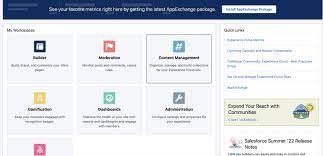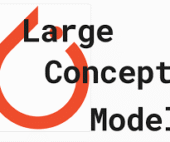Salesforce CMS: A Comprehensive Overview
Salesforce Content Management System empowers organizations to build sites, portals, and forums effortlessly through a user-friendly, declarative builder, offered at a subscription rate of $10,000 per org/month. Users leverage its capabilities to publish and manage various content types such as blogs and banners across multiple channels like emails, websites, mobile apps, and portals.
Key Features of Salesforce CMS
- Content Management and Publishing: Enables precise control over content editing permissions and distribution across channels, supporting diverse content formats including blogs and banners.
- File and Image Storage: Provides substantial storage of 5TB for files and images associated with CMS articles and other content within Salesforce CMS.
- Built-in Tools and Integrations: Includes a suite of integrated tools and limitless out-of-the-box integrations:
- Pardot Email Builder
- Marketing Content Builder
- Page Designer
- B2B Commerce Lightning
- Experience Builder
Benefits of Salesforce CMS
Salesforce CMS functions as a hybrid content management system, facilitating seamless content creation and delivery for teams of all skill levels. It integrates deeply with customer data, enabling personalized and efficient content distribution.
Real-World Application
Andy Jones from NOW, a streaming service by Sky in the U.K., praises Salesforce CMS for accelerating content creation. According to Jones, content creators transition swiftly from novice to mastery without relying on IT or design teams, resulting in visually appealing content. Integration of CRM with CMS enhances customer experiences significantly.
Features and Flexibility
- Simple Content Creation: Allows non-technical users to create, manage, and deliver content with ease. Choose from predefined content types or create custom ones, draft content within the application, utilize multi-language support, and enforce permissions to uphold brand standards.
- Content Collections: Create content collections akin to playlists that can be incorporated into various experiences.
- Fast and Flexible: As a hybrid CMS, Salesforce CMS supports centralized content creation and syndication across digital touchpoints, whether powered by Salesforce or other platforms.
Tools for Building Experiences
- Salesforce Experience Builder and Commerce Page Designer: These intuitive WYSIWYG tools enable users to build experiences declaratively by dragging content components onto websites, portals, forums, or commerce storefronts.
- Developer-Friendly: Catering to design and development teams, these tools support code-based experience creation.
Delivering Content to Third-Party Platforms
Utilize Salesforce headless APIs to seamlessly deliver content to third-party sites, experiences, or mobile apps.
Personalization and Customer-Centric Content
Salesforce CMS enhances content personalization by leveraging customer data, enabling teams to craft content that effectively addresses customer pain points, needs, questions, and desires.
Turning Data into Content
Transform CRM records into visually compelling content such as banners, tile menus, or engaging promotional CTAs, empowering every team member to contribute to enhanced customer experiences.
Salesforce CMS stands as a robust, adaptable, and user-friendly solution for organizations aiming to deliver personalized, data-driven content across all customer touchpoints.
🔔🔔 Follow us on LinkedIn 🔔🔔













